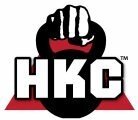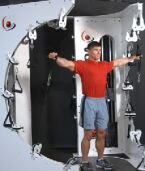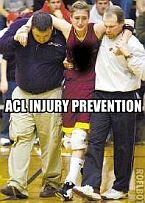Active Release Techniques®
Dr. Horwitz is certified in Upper Extremities, Spine, Lower Extremities, Nerve Entrapments, and Masters Course
Active Release Techniques® is a new and highly successful hands-on approach to injuries of muscles, tendons, fascia, nerves and the surrounding soft tissues." "It is similar to some massage techniques, only it's more aggressive. 'The art of it all is being able to know where to look for adhesions, how to feel for them and how to use active motion of the body part to break them up,' says inventor Mike Leahy, D.C."
The technique is extremely effective on injuries like muscle strains, rotator cuff tendinitis, tennis elbow, achilles tendinitis and carpal tunnel syndrome.
When a muscle, tendon, or ligament is torn (strained or sprained) or nerve is damaged, healing occurs in three stages called the inflammatory response: acute inflammation, repair and remodeling. In acute inflammation, redness, swelling, heat and pain occur. This phase lasts approximately 72 hours. After the inflammation recedes, repair begins. The damaged tissues heal with adhesions or scar tissue formation rather than the formation of brand new tissue.
Scar tissue is weaker, less elastic, less pliable and more pain sensitive than healthy tissue. These adhesions disrupt the normal muscle function, which in turn affects the biomechanics of the joint complex, and can lead to pain and dysfunction. This makes prompt and proper treatment essential for healing and rehabilitation.
Active Release Techniques® is applied by hand using a very specific pressure and tension on the muscle involved while moving the muscle underneath the contact (thumb or fingers of doctor's hand). "The affected tissue is trapped while the body part is moved, taking the tissue from its shortened to elongated position. Relative motion between tissues is introduced in order to restore gliding between those tissues" (Leah). This method softens and stretches the scar tissue, resulting in increased range of motion, increased strength, and improved circulation which optimizes healing.
The treatments are combined with proper stretching and strengthening of the involved tissues. Proper body posture and ergonomic instruction are also imperative for optimal results.
Leahy, Michael. Improved Treatments for Carpal Tunnel and Related Syndromes. Chiropractic Sports Medicine 9(1):6-9, 1995
Men's Health Magazine, November, 1999 pp.80-82
A NEW FIX FOR OLD INJURIES
You thought you'd have to live with that bum shoulder or trick knee forever. But a breakthrough treatment may prove you wrong BY LOU SCHULER
The first time Ming Chew sticks his thumb into my armpit, I understand why torture is a profession. Not that this is torture, by definition; it's a new form of physical therapy called active release techniques, or ART. And it may completely change the way we treat muscle injuries. Chew's thumb is in my armpit to undo the damage caused by a high-school football injury. It's a partial separation that has recurred many times since then. Most recently, I strained it doing exercises in the gym. (Most comically, I once separated the shoulder in the middle of sex. I mean, I can laugh about it now.)
The goal of this thumbing exercise is to break up scar tissue that has formed between the fibers of a rotator cuff muscle called the subscapularis. This most recent injury rendered my shoulder so weak that I couldn't throw a basketball 20 feet.
While Chew keeps his thumb in my armpit, I must pull my arm through a full range of motion. On one maneuver, I start with my hand overhead, then slowly rotate my arm so my hand ends up behind my back. It hurts like a broken marriage. While I'm in the middle of this move, I can't help but think that Chew could make a nice side income thumbing trade secrets from the armpits of powerful industrialists.
When it's over--the entire treatment has taken about 5 minutes--I feel sore but strangely exhilarated. Chew then takes my shoulder on a test run. We repeat some exercises that we tried before the treatment, and use find that the strength in my right shoulder has improved by several hundred percent, and that the flexibility has also improved a bit.
Chew has a set of dumbbells in his office, and I ask if I can try some lateral raises. Before the treatment I could barely do any repetitions with 12 pounds. But now I easily do a set with 15 pounds, rest a minute, do a set with 20, rest a minute, and then try 25 pounds. This is more weight than I've ever been able to use in this exercise, and I easily complete a half-dozen repetitions.
Chew says my shoulder is about 40 percent of the way back and predicts that after a couple more ART applications it will be 100 percent. I walk out of Chew's physical-therapy office and into the streets of Manhattan's Upper West Side feeling as if I'm both witness to and beneficiary of a miracle.
LOURDES, COLORADO
Miracle or not, ART certainly has an unconventional and controversial origin. In 1984, Michael Leahy, D.C., a chiropractor in Colorado, was working on patients who had suffered repetitive-motion injuries, mostly carpal tunnel syndrome. While doing standard manipulations, he found himself hitting scar tissue in places it wasn't supposed to be.
Most of us think of scar tissue as something that occurs at the point of an injury. You slice your finger on a beer can, the doctor sews up the tear, and the scar that eventually emerges at the site is a permanent reminder of how drunk you were.
But there's a second way scar tissue forms. When a muscle tightens up--through a repetitive motion such as typing, or after it has been slightly injured--some swelling occurs, and the swelling chokes off the oxygen supply to the muscles and connective tissues. This condition is called hypoxia, and it, too, causes scar tissue to form. That scar tissue can adhere to muscle fibers, preventing them from sliding back and forth properly. It can adhere to connective tissues, limiting the flexibility of a muscle or joint. And it can adhere to nerve cells, leading to carpal tunnel syndrome, chronic back pain, and other conditions.
Leahy didn't know about hypoxia in 1984. He just knew he'd found a problem he thought he could solve. "I devised movements and manual pressures to break down the scar tissues," he says. "The two materials"--muscle and scar--"are still there, but now the tissues will slide and move."
The technique, which he trademarked as ART in 1988, soon became popular with Olympic and professional athletes. Leahy says he can treat any muscle or joint with ART, and that he has worked on big-name athletes, including the Boston Red Sox pitcher Bret Saberhagen, Gary Roberts of the National Hockey League's Carolina Hurricanes, and the sprinter Maurice Greene. Leahy has also trained and certified about 800 other ART practitioners. Most of these are chiropractors, but he has certified orthopedists, physical therapists, and some massage therapists as well.
THE CONTROVERSY, AS PROMISED
There are few studies on ART. It's relatively new and continually evolving; if Leahy finds a better way to break up scar tissue in a patient with carpal tunnel syndrome, for example, he'll change his techniques and teach other practitioners to do things the new way when he can.
And ART is wholly owned by Leahy. The name is trademarked, and his scar-busting protocols are patented. He has taught almost everyone who is certified in the technique, although he's now training others to teach it. The only way to find an ART provider, aside from word of mouth, is to call Leahy's office in Colorado Springs for a referral.
Some people wonder what, exactly, Leahy has invented, other than the trademarked name. "ART is not a new technique," says Dean Cummings, M.D., an orthopedist. "It was called contractile myofascial release back in Europe about 50 years ago."
Everyone agrees that the technique is a form of myofascial release, which refers to the breakup of scar tissue inside muscles and connective tissues. Myofascial release is a well-accepted therapeutic treatment, generally covered by any health-insurance plan that covers physical therapy or chiropractic care. Rolfing is probably the best-known form of the treatment.
But ART is different from other types of myofascial release. First, the patient actively participates, moving his own limbs through a range of motion while the ART practitioner presses a thumb into the muscle. Second, ART differentiates between the tiniest of muscles, and between different muscle actions within muscles.
ART seems fast, safe, and remarkably effective for injuries to muscles and connective tissues. For $40 to $125 per session, a seasoned ART practitioner can fix up new or decades-old problems in a few sessions. "It has a lot of advantages in treating people with myofascial problems," says Dr. Cummings. "I don't have a lot of skepticism about it."
"The odds of fixing a problem with ART are about 95 percent. That's using my database of 3,000 cases," says Leahy. He acknowledges that other forms of hands-on therapy--myofascial release, chiropractic, whatever--"all work.But we're talking about fixing 95 percent of problems in four visits, versus 50 percent of them in 30 visits."
Chew says his cure rate is between 85 and 90 percent within six visits. And he says that he's able to fix 8 percent of his patients' problems in a single visit.
FASTEST THUMBS IN MODERN MEDICINE
All of which I would be inclined to dismiss as unprovable hyperbole, were I not living with absolutely no pain in my shoulder. After a second session with Ming Chew, I found that I was able to rotate my right arm in a circle with no discomfort, no feeling of something "clicking" in the socket. That's after 26 years of clicks.
"What's amazing to me is that it works so fast. It seems like black magic," says William Goldman, 68, a screenwriter. The owner of a bad back for more than 30 years, Goldman has been to a succession of orthopedists, chiropractors, and acupuncturists. But he says none of those disciplines can match ART for pure speed. He's had ART for four different problems, and each time the cure was nearly instant.
"The bottom line is that anything that works is good, as long as it's not detrimental. This is not detrimental, and it does work," says Andrew Feldman, M.D., an orthopedist and the author of The Jock Doc's Body Repair Kit. Dr. Feldman has successfully referred several patients to Chew. "We're seeing the genesis of something that could be huge in the future."
The only question is how many people are willing to have a thumb in a place where one has never been inserted before.
ART Class
How to decide whether active-release techniques will work for you Before seeking an ART practitioner to treat an injury or chronic problem, you should first see a physician. ART can't fix broken bones, torn ligaments, thyroid disease, or ruptured spinal disks. You need to rule out such problems. Second, if your insurance requires it, get a referral or prescription for either chiropractic care or physical therapy. (ART falls under the category of myo-fascial release, which is covered under many health plans.)
If your physician can't recommend an ART provider, call the office of Michael Leahy (719-473-7000), the chiropractor who invented the technique, and ask for a referral in your area. If your insurance won't pay for it, expect to fork out from $40 to $125 a session.
Not all ART providers are equally experienced. Four different ART credentials can be earned--upper body, lower body, spine, and total body--so if you have a choice of practitioners, choose the one with the most credentials.
Once a problem is fixed, you'll need to follow a program of stretching and strength building. If your problem is associated with an injury that occurred long ago, you probably have some weakness and inflexibility in the surrounding muscles.
|
The Ultimate Nutritional Lie Detector Test LEARN MORE 
|
Kettlebell Rehab

Click Here
To See How Kettlebells will transform your body!
Vortex Rehab

Click Here
To See How This
Revolutionary Machine
Can Help You!
Partner / Support

Loans up to 3 months - fast cash advances for up to 90 days and up to $5,000!


















